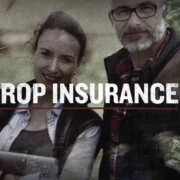House Crop Insurance Caucus Shares Importance of Farm Safety Net
Congressional staff filled a hearing room on Capitol Hill last week for the official launch of the bipartisan House Crop Insurance Caucus, hosted by co-chairs Cheri Bustos (D-Ill.) and Glenn “GT” Thompson (R-Pa.).
The House Crop Insurance Caucus will work to share with lawmakers the benefits of crop insurance and demonstrate how this program helps our farmers endure hardship by mitigating their risks.
Bustos has seen first-hand how crop insurance can be a lifeline for farmers devastated by unexpected weather events. Her Illinois district was hit hard by the extreme weather that inundated the Midwest this spring. “Our growers and producers are hurting,” she said. “Our family farmers are hurting.”
“This bipartisan Crop Insurance Caucus will work arm-in-arm to educate other members about the importance of a strong farm safety net and agricultural economy,” Bustos said.
Thompson made it clear what’s at stake when it comes to protecting the Federal crop insurance program. “Having crop insurance is incredibly important,” Thompson said. “We know that agriculture is really about food security. And food security is really about national security.”
This briefing was just the first of many, as the caucus hopes to be an accessible resource for Congress and an avenue to encourage bipartisan collaboration to strengthen the Federal crop insurance program.
“This caucus aims to educate our colleagues and educate the general public on the importance and value of crop insurance.” Thompson explained. “It all starts today.”
Farmers and agriculture lenders also spoke alongside the members of Congress, sharing their personal experiences with crop insurance.
Illinois farmer Ron Moore discussed how the impact of crop insurance extends beyond individual farmers to the local economies that rely on the income generated by agriculture. “Crop insurance is a valuable tool that we have as farmers. It’s imperative that we continue to preserve that tool because it not only helps me as a farmer, but it also helps my community,” Moore said.
Heather Greenwalt, Assistant Vice President at Farm Credit Illinois, remembered the 2012 drought and the role crop insurance played in preserving family farms across the Midwest. It was a beautiful spring and all of the local farmers were so proud of what they were able to accomplish in the field, she recalled. Until one day it just stopped raining. It was the worst drought since the Dust Bowl.
But the farm safety net worked as it was designed. Private crop insurance companies worked efficiently to deliver aid to farmers, saving tens of thousands of jobs along with taxpayer money.
“Crop insurance in 2012 was the difference in people staying in the agriculture industry in 2013,” Greenwalt said. “And crop insurance is again in 2019 going to be a major and crucial risk management tool for many farmers and producers.”
Risk is an intrinsic part of farming and producers are always calculating the variables that can impact crop production or their herd. But Greenwalt knows that when disaster strikes, the farmers she serves can find comfort in knowing that crop insurance gives them options for relief.
Greenwalt added, “As an agent and as a farmer, a strong crop insurance program means for a strong rural economy and a strong food supply for our nation.”
Learn more about how the Federal crop insurance program works by watching our brand new Crop Insurance 101 video or visiting CropInsurance101.org.

